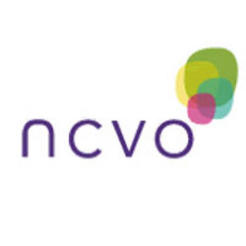Only four of the largest 100 charities in the UK currently follow the NCVO’s “two clicks to clarity” recommendations when it comes to transparency on senior executive pay.
NCVO recommended last April in a report on transparency around executive pay that every charity should reveal the exact salary of its highest earners, which should appear on its website "no more than two clicks away from its homepage".
Of all the charities in the Charity 100 Index, an index of the largest voluntary organisations in the UK by income compiled by Charity Finance magazine, only four comply with NCVO's guidelines on the topic.
Two of the four – Christian Aid and the RNLI – made their chief executive’s salaries available on their websites before the NCVO inquiry published its recommendations.
St Andrew’s Healthcare said that while it agreed with the NCVO guidelines, a belief that “charities should be transparent” was the reason behind it making salary details more easily available. The NSPCC, the fourth charity, offered similar reasons.
The inquiry panel was originally established in response to a series of articles in the media, starting with the Daily Telegraph in August 2013, which claimed that the number of “senior executives earning six-figure salaries” in aid charities had risen by “nearly 60 per cent”.
Martin Kyndt, director of strategy and people management at Christian Aid, said it was media scrutiny as opposed to the NCVO inquiry which prompted his charity to place salary details on their website.
Vicky Wright, deputy chairman of the RNLI, said that the public response to articles like the Telegraph’s were the reason the charity moved to be more transparent with pay on its website.
Wright, who was also a member of the NCVO’s inquiry panel, said that once the RNLI had explained to its donors why its senior executives received the sort of salaries they did, there were no further complaints.
“I found that a lot of charities aren’t very good at explaining why they pay people the amounts they do,” she said.
Karl Wilding, director of public policy at NCVO, said he expected more charities to take up his organisation's recommendations as time went by.
“Transparency around senior pay is a sensitive issue," he said. "We know many leading charities are now discussing greater transparency, but large scale change won’t happen overnight.
“Trustees need to take their time to get it right, both in terms of deciding what works for them and going through the necessary governance process that change requires.
“I think in a year’s time we’ll see a lot more charities opening up: but the direction of travel is clearly and rightly towards better transparency.”
Statistics
- 4 out of 100 charities explicitly disclose their chief executive’s salary on both the website and in their annual reports
- 31 out of 100 disclose the chief executive’s salary in their annual reports only
- 54 of out 100 charities have their annual reports available “two clicks” away from their website homepage
- 6 out of 100 do not publish a link to their annual reports anywhere on their website
In February's issue of Charity Finance Karl Wilding outlines NCVO's approach to disclosing executive pay, as part of a series of articles on building public trust. Find out more about subscribing.









